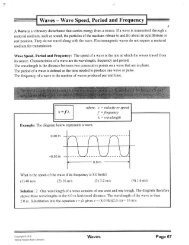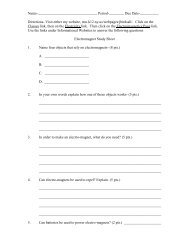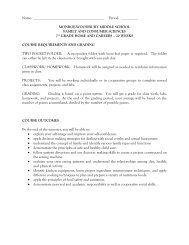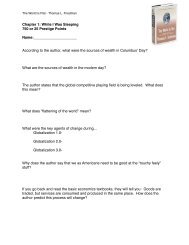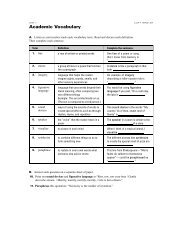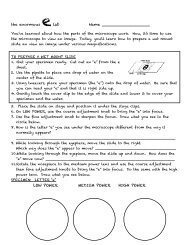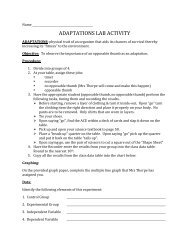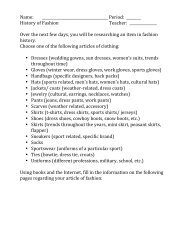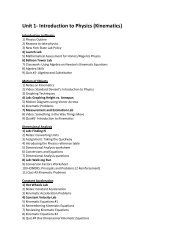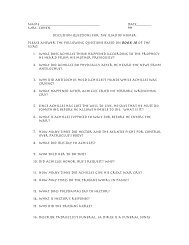Chapter 1, Lesson 2 Early Farmers
Chapter 1, Lesson 2 Early Farmers
Chapter 1, Lesson 2 Early Farmers
You also want an ePaper? Increase the reach of your titles
YUMPU automatically turns print PDFs into web optimized ePapers that Google loves.
<strong>Chapter</strong> 1, <strong>Lesson</strong> 2 <strong>Early</strong> <strong>Farmers</strong><br />
Skara Brae- Prehistoric Stone Age ruins found in Northern Scotland.<br />
Old Stone Age- Humans relied on tools made out of stone. The Old Stone<br />
Age lasted about 3.5 million years ago to 10, 000 years ago. Little progress<br />
was made. Technology improved at a slow rate.<br />
Technology- the way in which humans produce the items they use.<br />
New Stone age- began about 10,000 years ago and lasted 5,000 years.<br />
Humans made greater improvements in technology. Humans began to<br />
experiment with growing wild plants as food crops and domesticating wild<br />
animals. The New Stone Age ended when humans discovered metals.<br />
<strong>Early</strong> Farming<br />
Agriculture: raising of plants and animals for human use.<br />
The first plants to be domesticated were wheat, rice, and barley. These<br />
plants were selected based on the fact that when harvested they would not<br />
lose their seeds easily and scatter too much.<br />
Animals were domesticated so that they could meet the people’s needs. The<br />
animals provided food, a means of travel, clothing.<br />
Due to the increase in knowledge and the domestication of plants and<br />
animals villages began to produce surpluses (an extra supply) of food. Due<br />
to this, social divisions began to form. Stone Age villages could divide up<br />
the work. Each person was then assigned a job. (Ex: farmers, toolmakers,<br />
and hunters)<br />
The Iceman (5,000 years old, carbon dating proves the age of the body)<br />
A fully equipped prehistoric man, nothing like it had ever been seen<br />
by an archaeologist<br />
Since the Iceman was found with tools and clothes he used everyday,<br />
the discovery helped archaeologists learn much about what life was a<br />
like in the Alps during prehistoric times.
We can sometimes learn facts about an entire culture by focusing on<br />
one individual<br />
Items found with the Iceman:<br />
traces of grain<br />
small net with wide openings<br />
copper blades<br />
rope<br />
hunting arrows<br />
tiny crystals of sulfur and iron attached to black fungus<br />
two small beads of fungus on a leather strap<br />
2,000 grains of pollen from alder and pine trees<br />
bone needle<br />
ax




